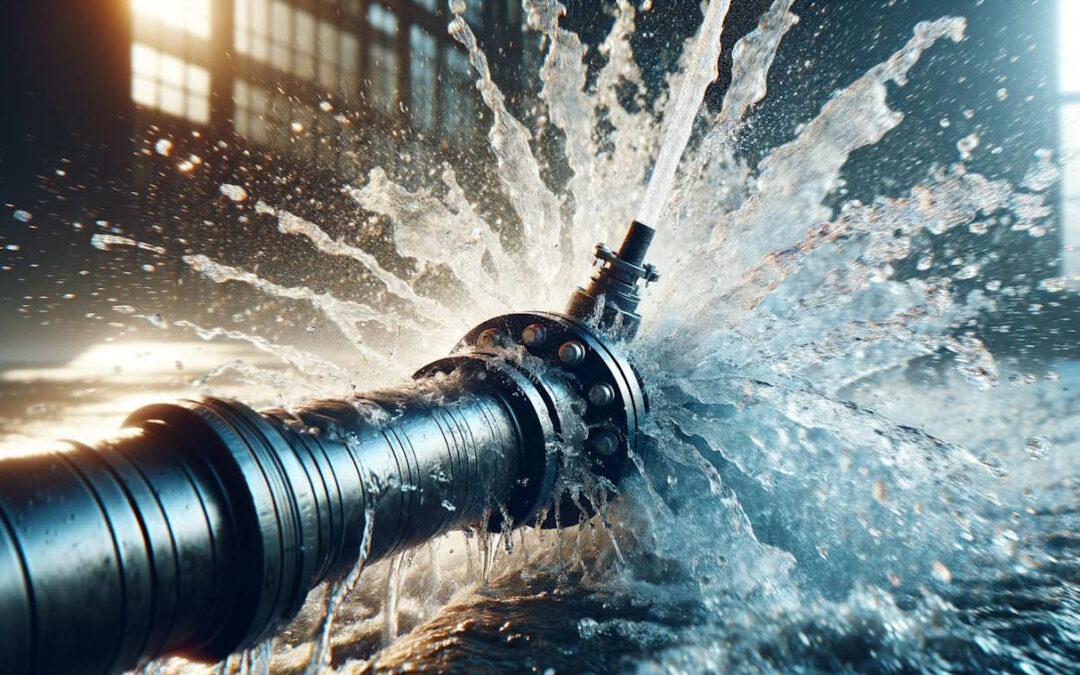Water Leak Detection: Just How to Identify and Deal With Leaks Before They Create Damage
Water Leak Detection: Just How to Identify and Deal With Leaks Before They Create Damage
Blog Article
Cutting-edge Solutions for Early Discovery of Water Leaks in Structures and Facilities
As the integrity of structures and infrastructure is vital, the difficulty of very early detection of water leakages has stimulated cutting-edge remedies that guarantee to revolutionize the means we protect versus potential problems. From advanced leakage detection innovations to the deployment of IoT sensors for real-time surveillance, the landscape of leak avoidance is evolving quickly. Equipment knowing formulas offer a peek right into the future of leak prediction, while thermal imaging provides a non-intrusive approach for pinpointing concealed leakages. Automated water flow evaluation systems are improving just how leaks are determined and addressed, paving the means for a proactive technique to water leakage detection. Each of these options holds the essential to making certain the integrity and durability of our built atmosphere, prompting a change towards a much more lasting and reliable future.
Advanced Leakage Discovery Technologies
Advanced leakage discovery technologies, equipped with advanced sensors and algorithms, play a critical duty in swiftly identifying and pinpointing water leaks in various settings. These technologies employ a combination of acoustic, thermal, and electromagnetic sensing methods to spot leaks precisely. Acoustic sensing units identify the audio of leaving water, permitting accurate localization of the leak source. Thermal imaging discovers temperature modifications triggered by water leakage, providing an additional reliable approach for leak identification. Electro-magnetic sensing units can recognize modifications in magnetic fields brought on by water, offering yet another layer of leak detection ability.

IoT Sensors for Real-Time Monitoring
In the world of modern-day water leak discovery, the assimilation of IoT sensors for real-time tracking represents a pivotal development in enhancing proactive leakage discovery abilities. These sensing units provide continual surveillance of water supply, supplying real-time information on water circulation rates, pressure variants, and temperature modifications. By leveraging IoT modern technology, these sensing units can detect also the tiniest anomalies in water use patterns, allowing very early identification of potential leaks prior to they escalate right into significant concerns.
IoT sensors transfer data to a central system, where sophisticated algorithms evaluate the details and generate alerts or notices when abnormalities are discovered. This real-time tracking ability permits building owners or center managers to without delay attend to leakages, decreasing water damages, lowering repair prices, and preserving water resources.
Moreover, IoT sensors can be incorporated with building monitoring systems, permitting computerized reactions to detected leaks, such as turning off water shutoffs or turning on pumps to reduce the influence of leaks. Overall, the implementation of IoT sensing units for real-time monitoring considerably boosts the efficiency and performance of water leakage detection in buildings and facilities.
Artificial Intelligence Algorithms for Leak Forecast

One key benefit of utilizing device understanding for leak prediction is its capacity to continuously learn and improve its precision over time. As more data is gathered and fed into the formula, it can improve its forecasts and adjust to transforming problems, ultimately raising the dependability of leak detection systems.
Moreover, machine discovering algorithms can aid in determining subtle indications of leaks that might go unnoticed by conventional monitoring approaches. water leak detection. By examining complex data collections in real-time, these algorithms can provide very early cautions and signals, enabling timely treatment and preventive upkeep to reduce possible water damages and connected costs
Making Use Of Thermal Imaging for Leakage Discovery
Thermal imaging technology provides an appealing method for finding water leakages in various systems and infrastructures. By using infrared radiation and temperature variations, thermal imaging electronic cameras can recognize hidden leakages that are not conveniently noticeable to the nude eye.
One of the essential advantages of thermal imaging for leakage discovery is its non-intrusive nature. Unlike standard techniques that may require breaking into her response walls or floors to locate leaks, thermal imaging permits non-destructive testing. This not just saves time and minimizes expenses yet additionally minimizes disturbance to the building or infrastructure being analyzed. Additionally, thermal imaging can promptly check huge areas, providing a comprehensive overview of prospective leakage sources in a timely manner. On the whole, using thermal imaging technology improves the efficiency and accuracy of water leak detection, making it a useful device for keeping the honesty of structures and facilities.
Automated Water Flow Evaluation Systems
How can computerized water flow analysis systems change the detection and management of leaks in numerous systems and frameworks? Automated water circulation analysis systems offer an aggressive technique to leak detection by continually keeping an eye on water flow prices and patterns. By establishing standard data, these systems can swiftly recognize deviations that might suggest a leakage, making it possible for punctual treatment to protect against substantial damages.
These systems use innovative formulas to analyze real-time data and offer prompt informs when anomalies are detected, enabling quick action to be taken. Furthermore, automatic water flow analysis systems can be incorporated with building monitoring systems or IoT platforms, enhancing overall performance and allowing remote surveillance capacities.
Moreover, the data accumulated by these systems can be used for predictive upkeep objectives, aiding to recognize prospective powerlessness in the infrastructure before leakages occur. Overall, the execution of computerized water flow evaluation systems can dramatically boost leakage detection and management methods, inevitably leading to cost savings, decreased water wastage, and boosted sustainability in structures and framework.

Conclusion
In verdict, the combination of innovative leakage detection innovations, check this IoT sensing units, artificial intelligence algorithms, thermal imaging, and automated water circulation evaluation systems provides ingenious services for early detection of water leaks in structures and facilities. These modern technologies allow real-time surveillance, forecast of leaks, and efficient discovery techniques to avoid moved here water damage and wastage. Executing these services can help in maintaining the stability and sustainability of water supply in different settings.
Report this page